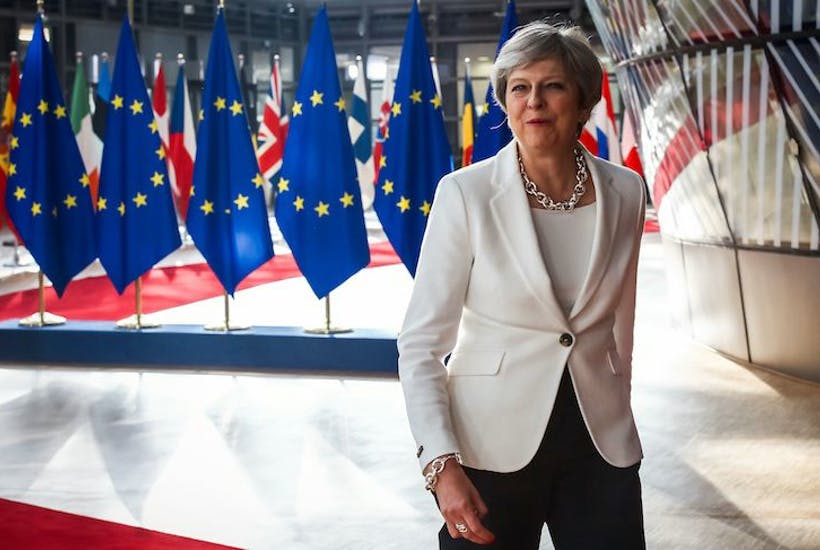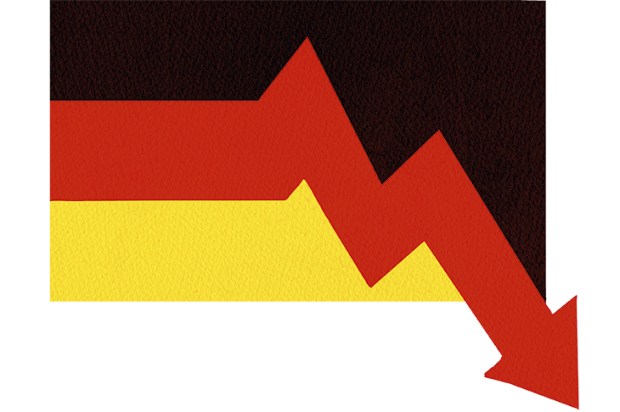So Theresa May and Jean-Claude Juncker enjoyed a ‘broad and constructive exchange’ during their working dinner in Brussels. Last time the Prime Minister broke bread with the President of the European Commission — at Downing Street six months ago — Juncker dubbed her ‘deluded’ and complained about the food.
Despite better mood music, this latest supper summit was hardly positive. European Union negotiators still refuse to discuss trade or end the divisive impasse over citizens’ rights until Britain agrees to pay a stonking ‘divorce bill’ — upwards of £40-£50 billion. All the while, the Article 50 clock is ticking.
The prospect of a ‘no deal’ Brexit has lately loomed into view, and not a moment too soon. That’s because rather than focusing on issues that matter to real people, like commerce and residency, Brussels remains fixated on process. This intransigence highlights why Britain must prepare to operate without an EU free-trade agreement (FTA). The good news is that using World Trade Organisation rules instead is an entirely acceptable outcome, and it would be a strategic error to think otherwise.
Trading under WTO rules is often presented as ‘disastrous’ — which is alarmist and wrong. A ‘bold and ambitious’ FTA, keeping UK-EU trade largely tariff-free, is obviously the UK’s preference. The Prime Minister has made this clear ever since her Lancaster House speech of January 2017. But if we don’t secure an FTA with the EU by March 2019, we then charge reciprocal WTO tariffs, averaging some 2-3 per cent.
This in no way stops UK trade with the EU, as some gloom-mongers claim. All nations have ‘access’ to the single market, provided regulatory standards are met and the generally low tariffs are paid. The US and China conduct hundreds of billions of dollars of EU trade annually with no FTA; Britain can do the same. We’re well placed to trade with the EU on WTO terms, in fact, as we’d start with full regulatory compliance.
If trading under WTO rules is so bad, how does the UK already sell the majority of its exports beyond the EU, largely under such rules? Non-EU trade generates a surplus and is fast-growing, as opposed to our EU trade, which is shrinking and in deep deficit despite the single market. Britain’s existing trade with the US, our largest single country export destination, is under WTO rules. The EU, given the often conflicting needs of numerous member states, has failed to agree a US trade deal despite 60 years of trying.
Commercial logic, in the shape of the EU’s £71 billion trade surplus with Britain, suggests Brussels should want a UK-EU trade agreement. But a desire to ‘punish’ us, or the refusal of some sub-regional EU parliament outpost to ratify any deal, could prevail. On a purely practical level, then, it’s vital to prepare for WTO trade with the EU by making necessary upgrades to both physical infrastructure and staffing of cross-Channel customs clearance.
This makes strategic sense too. Unless the EU sees Britain is not prepared to sign just about any FTA Brussels puts on the table, we’ll be offered only a bad one. Signing a stinker of an FTA out of desperation to ‘get a deal’ would disadvantage UK exporters and consumers for years.
When Britain joined the European Economic Community in 1973, existing members changed our entry terms at the very last moment, forcing the UK to give up sovereignty over our fishing waters. Similarly today, the UK will secure an advantageous FTA and ensure it sticks only if we’re willing and able to trade under WTO rules instead.
Once the drama of Brexit is over, beyond March 2019 and any subsequent transition, WTO rules can be used as a ‘platform’ to cut an FTA with the EU under less time pressure, making a better deal more likely. While some UK firms worry that WTO rules will hurt ‘complex supply chains’ across the EU, most manufacturing components are zero-rated so would not attract any tariffs. Our EU deficit also means, under WTO rules, that the UK pays less in export tariffs than it receives, creating several billion pounds in net revenues for the Exchequer each year. The surplus could be used to compensate sectors like cars and agriculture, where tariffs on UK exports are likely to be higher.
‘No deal’ — trading with the EU with no FTA — is an entirely coherent position. It is very different from just ‘walking away’, which means failing to settle administrative issues such as mutual recognition agreements on exports. No one is advocating such an approach. It is unthinkable that existing and uncontroversial EU protocols granted to countless other non-EU members would not apply to Britain. For Brussels to deny such rights would breach WTO and EU treaties, while incensing EU businesses and voters by threatening billions of euros of profit and countless EU jobs.
When it comes to lurid scare stories about planes not flying, Europe’s ‘Open Skies’ agreement applies to many non-EU nations and those outside the single market. The UK boasts a huge aviation industry, with numerous EU-based airlines using our airports. That gives us much leverage.
Politicians will beat their chests, but the commercial imperatives to strike new flight deals are mutual and massive. If the details aren’t finalised by March 2019, memorandums of understanding will surely extend current practice until they are.
No deal, then, really is better than a bad deal, as ministers must keep saying. No deal is not ‘unthinkable’, as Amber Rudd suggested this week. We need to think about it, and soon. A deadline should now be announced — say mid-2018 — after which, if no FTA looks likely in the government’s view, the UK will shift emphasis, focusing instead on preparing for WTO rules. Only then will the EU stop playing games and put a UK-EU trade deal, the real meat of these Article 50 talks, back on the negotiating menu.
Got something to add? Join the discussion and comment below.
Get 10 issues for just $10
Subscribe to The Spectator Australia today for the next 10 magazine issues, plus full online access, for just $10.
You might disagree with half of it, but you’ll enjoy reading all of it. Try your first month for free, then just $2 a week for the remainder of your first year.















Comments
Don't miss out
Join the conversation with other Spectator Australia readers. Subscribe to leave a comment.
SUBSCRIBEAlready a subscriber? Log in